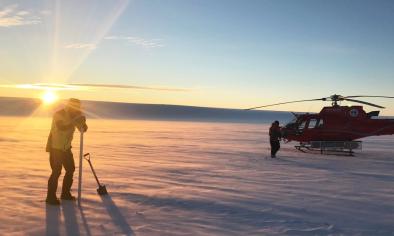Science Source
Important role for ocean warming and increased ice-shelf melt in Antarctic sea-ice expansion
- States changes in sea ice significantly modulate climate change because of its high reflective and strong insulating nature
- States that in contrast to Arctic sea ice, sea ice surrounding Antarctica has expanded, with record extent in 2010
- States this ice expansion has previously been attributed to dynamical atmospheric changes that induce atmospheric cooling
- Shows that accelerated basal melting of Antarctic ice shelves is likely to have contributed significantly to sea-ice expansion
- Presents observations indicating that melt water from Antarctica’s ice shelves accumulates in a cool and fresh surface layer that shields the surface ocean from the warmer deeper waters that are melting the ice shelves
- Finds that cool and fresh surface water from ice-shelf melt indeed leads to expanding sea ice in austral autumn and winter
- Finds this powerful negative feedback counteracts Southern Hemispheric atmospheric warming
- States that although changes in atmospheric dynamics most likely govern regional sea-ice trends, the analysis indicates that the overall sea-ice trend is dominated by increased ice-shelf melt
- Suggests that cool sea surface temperatures around Antarctica could offset projected snowfall increases in Antarctica, with implications for estimates of future sea-level rise
Related Content
Headline

Jan 29, 2020 | BBC News
Journey to the 'doomsday glacier'
Headline

Nov 22, 2019 | NOAA Climate.gov
Understanding climate: Antarctic sea ice extent
Headline

Mar 26, 2019 | The Guardian
Australian researchers find huge lakes beneath largest east Antarctic glacier
Science Source
| Geophysical Research Letters
Mass Loss of Totten and Moscow University Glaciers, East Antarctica, Using Regionally Optimized GRACE Mascons
Yara Mohajerani, Isabella Velicogna, Eric Rignot


